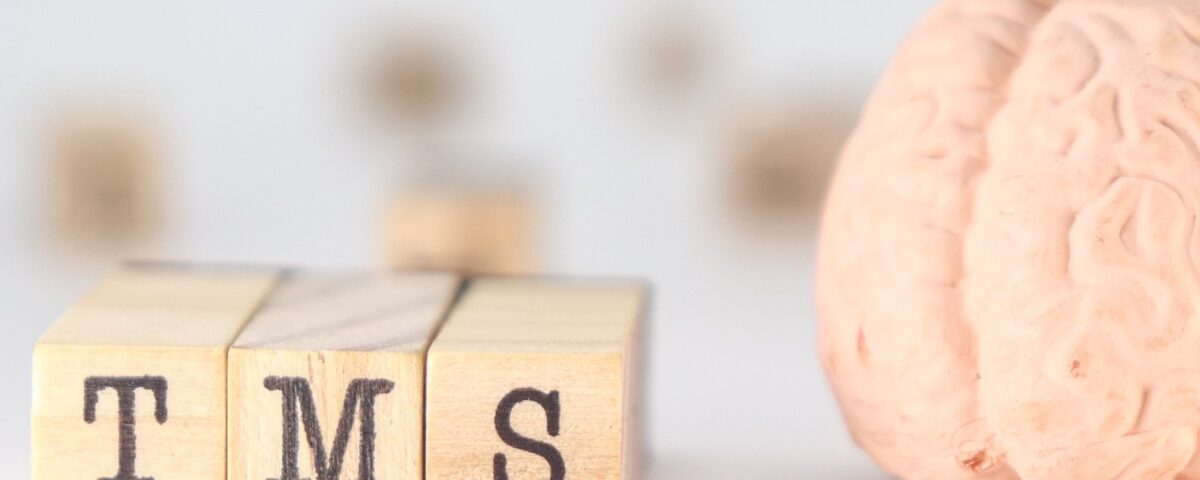
Psychiatry vs. Psychology: Understanding the Differences and Similarities
May 25, 2024
Apogee Behavioral Medicine Announces New Educational Affiliation with Yale School of Medicine
July 1, 2024Transcranial Magnetic Stimulation for Depression
Depression can be many things to many different people. Severe cases of this mood disorder can persist for months or years without significant improvement despite the best medical treatment. Those severe cases are called ‘Treatment Resistant Depression.’ Luckily there are new treatments and new hope for these patients and those with loved ones who suffer from depression. Transcranial Magnetic Stimulation (TMS) can substantially improve depression outcomes with this FDA-approved, non-invasive, and painless magnetic pulse treatment.
Medical Treatments for Depression and Non-Medical Treatments
While there is no agreement as to the exact cause of depression, one commonality exists amongst those who suffer, and that is a chemical imbalance in the brain. Nonmedical treatments have been shown to over time shift brain chemistry, however for many cases of depression, particularly persistent or major depression, medical interventions are used in concert with behavioral therapy. Depending on the assessment results, patient history, and medical testing psychiatrists and mental health professionals treat these chemical imbalances using invasive therapies and or non-invasive therapies. Both treatments are effective in modifying brain chemistry, however, for many, medications alone have proven ineffective, and they are not an option. Transcranial Magnetic Stimulation is a real breakthrough for these patients.
Transcranial Magnetic Stimulation (TMS) vs Electroconvulsive Therapy (ECT)
Electroconvulsive Therapy (ECT) is an invasive therapy for the treatment of depression and other mood disorders. It requires the patient to be placed under anesthesia while a doctor places electrodes on the head of the patient and induces seizures. These seizures result in a rewiring of how the brain works. Many confuse Transcranial Magnetic Stimulation (TMS) with Electroconvulsive Therapy (ECT), but they differ for various reasons. While ECT uses an electrical current, TMS uses magnetic impulses. TMS is noninvasive, does not require anesthesia, does not induce seizure activity, and targets only a small area of the brain’s prefrontal cortex to encourage new connections between nerve cells.
How Transcranial Magnetic Stimulation Treats Depression
Transcranial Magnetic Stimulation is a treatment administered in a licensed behavioral health clinic. It uses magnetic impulses to activate cells in the brain that release mood-regulating neurotransmitters, which are reset to relieve depression symptoms. The machine consists of an electromagnetic coil placed in certain areas of the head.
Some patients receive treatment and immediately notice a difference in their mood, while others see a difference in as little as three weeks. As a noninvasive form of brain stimulation, it has little to no side effects. Some patients experience tingling, lightheadedness, or headache, but these are temporary. What is remarkable is the efficacy of this stimulation and the lasting impact. After a full treatment course, patients typically experience an improvement in symptoms lasting 6 months to a year. Depending on your medical provider and treatment plan, you may be prescribed another course or may benefit from maintenance treatment.
Results of TMS Treatment for Depression
There are a few drawbacks to this non-habit-forming, quick, and non-invasive treatment for depression. Providers may also use TMS to treat Obsessive Compulsive Disorder (OCD), certain forms of anxiety, and even tobacco dependence. According to Harvard Health, 50% to 60% of people with depression who have tried and failed to receive benefits from medications experience a significant difference in their symptoms, and about one-third of these individuals experience full remission. This offers many patients a lot of hope, where for decades, the options were limited to medication management, therapy, and ECT.
However, achieving a chemical balance in your brain does not necessarily mean that you will not experience other feelings that accompany depression. When we talk about the results of treatments for depression, it is really important to drive home how complex depression is and that many people battle depression for years. Having TMS as another therapeutic modality for patients to consider is an incredible breakthrough.
Many factors, from life events to genetics, can contribute to depression, so having a behavioral health team that takes a holistic view of your individual case is key. TMS is an excellent treatment option for those seeking a non-invasive medical intervention to help rebalance the brain and better regulate moods. If you are looking for a team with the “whole picture in mind” that can incorporate TMS into your treatment plan, contact Apogee Behavioral Medicine to learn more.
FAQ
Does it hurt?
Transcranial Magnetic Stimulation is painless. You are treated while seated in a comfortable chair. Some temporary side effects include scalp discomfort, headache, facial muscle tingling, and lightheadedness.
How long does it take?
The course of treatment, number of courses, and maintenance a patient will need depend on the treatment plan. However, a course typically consists of 5 treatments per week over 6 weeks. Individual sessions typically take between 2 to 20 minutes, depending on the best protocol for you.
How many treatments does it take to get results?
Some people experience results in one session, but most report improvement in mood within 3 to five weeks.
How old do you have to be to get TMS?
The FDA just approved TMS for patients 15 years and older, depending on the TMS machine being utilized.
Does Apogee Behavioral Health administer TMS for treatment-resistant depression?
Yes, if the patient meets the criteria for this unique treatment. Consultation with our TMS team can quickly determine if you are a candidate for this unique treatment option. Depending on the assessment, medical history, and patient profile, it can be used in the Apogee Behavioral Health treatment plan.
